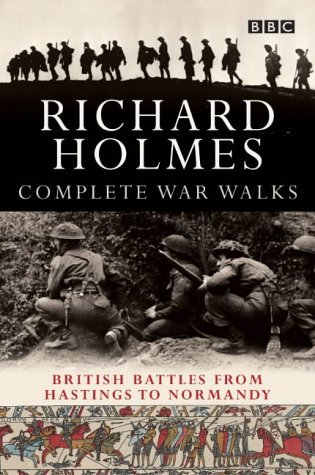
Complete war walks: from Hastings to Normandy
Book Description
Step into the footsteps of history, where the echoes of battle still resonate. 'Complete War Walks: From Hastings to Normandy' invites readers on a gripping journey through iconic landscapes shaped by conflict. From the bloodied fields of Hastings to the haunting cliffs of Normandy, Richard Holmes masterfully paints a vivid picture of the sites that turned the tides of wars. Each step uncovers tales of valor, sacrifice, and the relentless human spirit. As the past collides with the present, one question lingers: what will be revealed as history unfolds beneath your feet?
Quick Book Summary
"Complete War Walks: From Hastings to Normandy" by Richard Holmes is a compelling historical guide that leads readers through the battlefield landscapes of Britain and Northern France. Holmes blends meticulous research with on-site exploration, vividly recounting the drama and significance of battles from the Norman Conquest to the Allied invasion of Normandy in World War II. The book combines strategic analysis, human stories, and practical walking routes, enabling readers to experience history where it happened. Holmes pays tribute to the courage and sacrifice of those involved in these conflicts, enriching the historical narrative with personal accounts and cultural context. Through his expert storytelling, Holmes immerses readers in the echoes of war, encouraging reflection on the lasting legacies of conflict and the meaning of remembrance.
Summary of Key Ideas
Table of Contents
Experiencing History Through Place
Richard Holmes’s journey begins with a central theme: the unique power of place. He asserts that standing on the fields where history unfolded—in Hastings, Bosworth, or Normandy—enables a profound connection with the past. Holmes describes how modern landscapes still bear scars and memories of war, and by walking these routes, readers can trace not only events but emotions and decisions that shaped the course of history. Geography, weather, and terrain decisively influenced outcomes, and Holmes encourages readers to appreciate these elements first-hand.
The Human Perspective in Battle
The book places a vital emphasis on the human experience in warfare. Holmes goes beyond strategy and weaponry to highlight the personal stories of those involved—from monarchs to common soldiers. Eyewitness accounts, letters, and memoirs humanize the conflict, conveying moments of valor, fear, and camaraderie. Holmes reveals how the tides of battle swayed not just through tactics but through individual and collective human resolve. The book invites empathy and understanding by illuminating the hopes, anxieties, and sacrifices of past participants.
Evolution of Warfare and Strategy
A core thread running through Holmes’s narrative is the evolution of warfare over centuries. The reader witnesses the progression from the bloody hand-to-hand combat at Hastings, through the disciplined formations of the English Civil War, to the mechanized devastation at Normandy. Holmes details how technological innovation, changes in leadership, and shifts in military doctrine transformed the conduct and results of war. Each battlefield exemplifies a turning-point, underscoring the adaptability—or lack thereof—of those engaged.
Legacies and Lessons from Conflict
Holmes underscores that the legacy of these wars endures beyond the battlefields. He discusses how memorials, relics, and even the altered geography carry the memory of conflict forward. Walking these fields invites reflection on themes of reconciliation, consequence, and the cost of war. Holmes links past struggles to present identity, arguing that understanding these historical moments shapes collective memory and informs national consciousness. Thus, each walk is not just a glimpse into a distant past, but a meditation on its meaning today.
Remembrance and the Landscape
Finally, Holmes offers insights into the importance of remembrance and the role landscapes play in honoring the past. He emphasizes practical guidance for readers wishing to undertake their own war walks, providing routes and describing points of significance. Through these walks, he advocates for personal engagement with history, arguing that such experiences honor those who fought and lost their lives. The landscape becomes more than scenery—it becomes a living record of valor and sacrifice, urging each generation to remember and learn from the lessons beneath their feet.
Download This Summary
Get a free PDF of this summary instantly — no email required.





